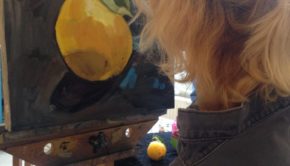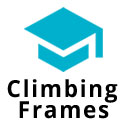CLIL, ART and TEFL
Content and Language Integrated Instruction is a way of teaching which is becoming more and more popular. It differs from English language lessons in that the focus of the lesson is not on teaching language but rather on teaching content. However, this content is taught through English as the medium of instruction. In other words, students learn English by learning about a subject.
CLIL was initially considered quite a controversial technique in the TEFL field, as many teachers felt the students might suffer in these subjects as a result of their level of English. It has clearly stood the test of time, though, as it is remarkably popular in mainstream schools and research has shown it to be an effective way of teaching both content and language.
CLIL is now used for a wide variety of subjects, such as a Science, Accounting, Music, Physical Education and Art. It lends itself well to subjects which are very practical and hands-on so that language is reinforced by actions, visuals and personal experience. With these subjects, though there is some terminology there is not a heavy focus on content and facts (such as in History, for example) so students who do not have an advanced grasp of English will not be penalised. They will be able to learn the content of the subject and their English skills will be upgraded at the same time.
If you are a CLIL teacher and you are worried about finding appropriate material for your EFL lessons, make sure you are familiar with the different resources available to you. The Internet, of course, is a great source of lesson ideas, activities and materials and you should be able to find a few websites dedicated to providing CLIL worksheets for a range of subjects, student ages and language levels.
Then you should look outside the classroom for inspiration. Considering you are teaching a subject which would relate to the outside world, think about how you could utilise the world outside the classroom in your lesson. This could involve students using realia in their lessons or it could even mean taking your students out of the classroom every once in a while.
But let’s look at an example in more detail to explain exactly how this can work: CLIL and Art.
Firstly, you can find pictures of art works online and use them to teach the different techniques used in art. For example, you can find a work by Botticelli to illustrate oil painting or a work by Picasso to explain cubism. Once you have taught the details behind the techniques you can allow the students to try their own hand at it.
For Art history, you can let the students do a webquest to find out about a certain artist or art period. Websites of national galleries usually have very good websites which are easy to navigate. Have a look yourself and set up some questions your students need to answer or show them where to look for information and give them free reign over the research. They can present their findings to the class along with visuals to support their presentations, in this way teaching their peers.
You could also contact a local art school and arrange an outing with them. The students can tour a real exhibition, possibly with a guide as well. They may be able to interview an artist or have a demonstration lesson in a real art studio. Being outside the classroom is a good way to bring variety into your lessons and your students will enjoy learning in a different environment.
Bringing CLIL lessons into your classroom is an effective way of changing the focus of teaching without suppressing language learning. Students enjoy utilising English in a useful way, rather than learning for learning’s sake. The next time you are thinking of a way to mix things up in your classroom, remember that art is an especially valuable subject to incorporate as a CLIL lesson.
- CLIL, ART and TEFL - August 31, 2016
- Teaching English and Art - August 31, 2016
- 3 WAYS TO INTRODUCE DOGME INTO YOUR EFL CLASSROOM - April 4, 2016

















